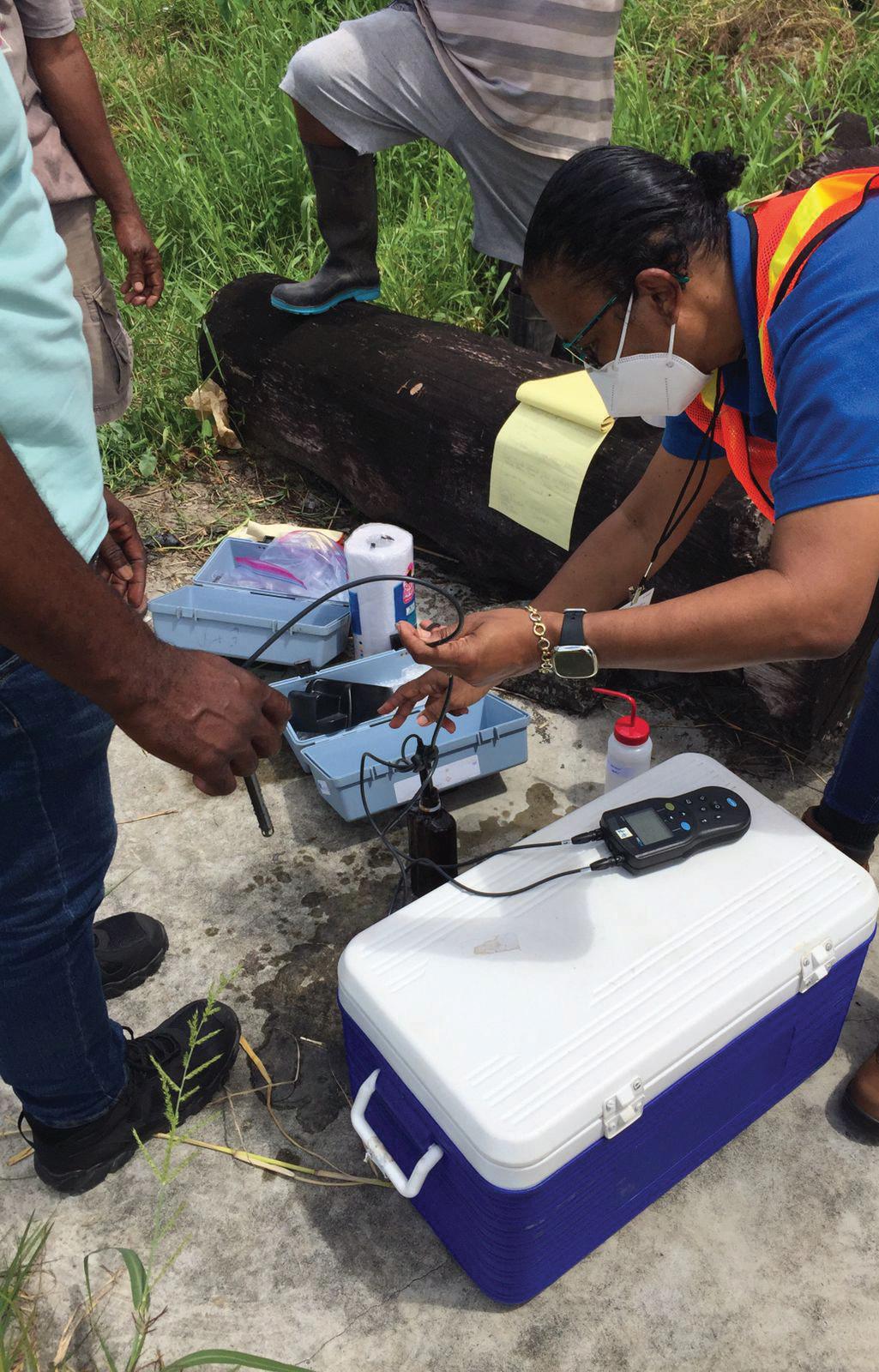
1 minute read
RESPONDING TO ENVIRONMENTAL EMERGENCIES
WITH Guyana’s rapidly expanding development across all sectors, the Environmental Protection Agency (EPA) must be equipped and trained to respond effectively to environmental emergencies in order to reduce environmental impacts and risks to human health. o effectively respond, the Agency has developed Guidelines for Environmental Emergency Response and has trained approximately 60 percent of its staff in the Incident Command System, while another 15 persons were trained in Shoreline Cleanup Technique. Additionally, the Agency has invested in a vehicle and environmental monitoring equipment to aid in effective response.

Advertisement
According to the United Nations Environment Program, an environmental emergency is a sudden-onset disaster or accident resulting from natural, technological or human-induced factors or a combination of these, that causes or threatens to cause severe environmental damage as well as harm to human health and or livelihoods.
According to the EP Act Cap 20:05, the EPA responds to environmental emergencies and provides technical support to sister agencies responding to environmental emergencies, including the Civil Defense Commission (CDC) and the Guyana Geologies and Mines Commission.


Given the EPA’s mandate to oversee the effective management, conservation, protection and improvement of the environment; and to prevent or control pollution, it is our responsibility to respond in an operational role for environmental emergencies. Technical advice is provided to the government, industry, and the community before, during, and after emergencies through scientific, engineering, and regulatory expertise on the environment and the impacts to health from pollution caused.
Besides the major benefit of providing guidance during an emergency, developing a plan has other advantages. During an emergency response, discoveries of unrecognized hazardous conditions that would intensify an emergency situation can be addressed to eliminate them. The planning process often highlights or pinpoints challenges such as the lack of resources (equipment, trained personnel, supplies, etc.), or items that can be corrected before an emergency occurs. In addition, an emergency plan promotes safety awareness and shows the organization’s commitment to the safety of its workers.
As the probability of an occurrence of an emergency is often times high, preplanning is necessary. A well-thoughtout, well-organized emergency response plan will help to eliminate these issues. An urgent need for rapid decisions, a shortage of time, and a lack of










